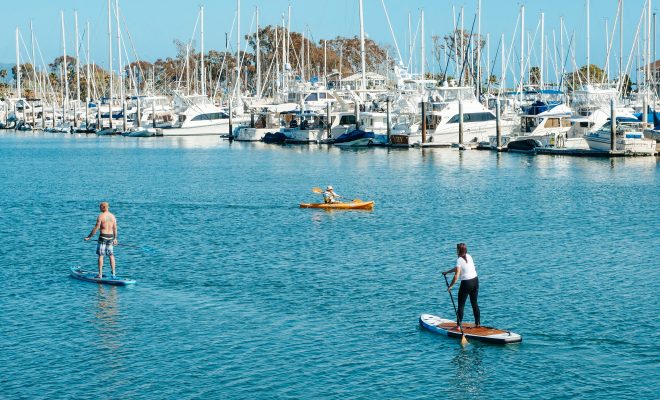
Lifestyle
All About SUP Boarding
SUP stands for Stand Up Paddleboarding. It’s widely popular in San Diego, so if you’ve been to the beach or bay you’ve probably seen it — you stand on a surfboard and propel yourself with a paddle. By using the SUP paddle, unlike surfing, no wind or waves are needed to practice. You can SUP on lakes, canals, inland waterways and harbors, or the ocean of course.
Where does SUP come from?
SUP Boarding is a form of surfing which originated in Hawaii. There the surf teachers stood on their surfboards with a paddle to stay with their students during the lesson. This way they could easily give instructions and keep an overview.
What do you need?
In order to Stand Up Paddle Board, you need a SUP-board. But what exactly is a SUP-board? Many people think that while SUP-ing you are standing on a surfboard. They are, indeed, similar. But what are the biggest differences and how do you choose one?
Try Inflatable Versions if you’re just getting started.
- There are both inflatable and non-inflatable SUPs available.
- A Stand Up Paddle Board is often a bit lighter than a surfboard. These are relatively easier to lift. And often an advantage is that, especially the inflatable ones, are easier to transport and store.
Find the right fit
There is a SUP-board for every level of athlete, from beginner to intermediate and advanced. A SUP board is many times more stable and has more air volume than a surfboard and they can come in a variety of shapes, sizes and forms. If you’re looking for a board that can meet a variety of needs, look for one with an elastic band or several elastic bands at the front and back to carry your equipment.
Lastly, keep in mind that stand up paddle boards come in different sizes: the smaller the board, the more maneuverable. The longer the board, the faster it will be.





0 comments